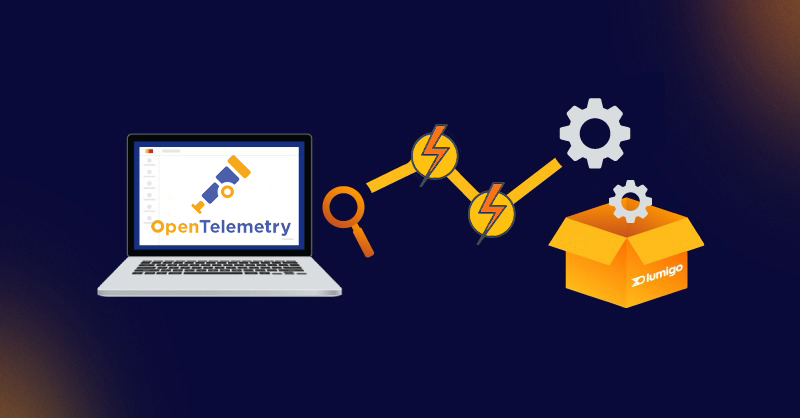Dec 20 2023

This is the second post in a 3-part series about shifting Observability left. If you have not had a chance to read the first, you can find it here.
In today’s complex microservices deployments, gaining visibility into deployments is vital for optimal system performance and scalability. This has become even more important as the tech industry has moved toward microservice architecture reliance. Navigating through logs has become increasingly complex as requirements have grown. This complexity has presented significant obstacles for developers and development teams in effectively identifying and resolving issues within modern and scalable systems.
Distributed tracing quickly emerged as a best practice, driven by the need for a solution to simplify the surfaced deployment complexities associated with complex architectures. This rise has been propelled by an industry-standard need for a solution that simplifies these complexities and aligns with an open-source approach. Enter the CNCF-backed OpenTelemetry project, which has been pivotal in helping standardize this evolution. To meet this challenge head-on, distributed tracing offers transparency and insights. It does so within the framework of an open-source ethos, helping revolutionize how we approach observability in modern architecture.
In this blog post, we’ll explore the significance of shifting observability left and empowering developers to detect, diagnose, and troubleshoot issues from the beginning of the development lifecycle.
Understanding Distributed Tracing
Distributed tracing is a technique that tracks individual requests as they traverse multiple services and systems. It provides a chronological log of each request’s journey, encompassing every service call, database query, and external API interaction made along the way. This cohesive data enables developers to visualize the entire path of a request and analyze the performance and behavior of each microservice involved.
Distributed tracing is built upon three fundamental components:
- Trace: A unique identifier representing a single request’s journey through the system. It serves as a container for all the associated spans.
- Span: Represents a single operation within a trace, typically corresponding to a specific service or function call. Spans are organized sequentially to form the trace’s timeline.
- Context Propagation: Ensures that each request carries a trace context, enabling the correlation of spans across different microservices. Context propagation is vital for stitching together the complete picture of a distributed transaction.
Why Shift Observability Left with Distributed Tracing?
As we learned in the previous post in this series, shifting observability left means integrating observability practices as early as possible in the software development process. By adopting distributed tracing from the outset, developers can leverage distributed tracing as a proactive toolset for identifying and resolving potential issues, whether bottlenecks, errors, or latency challenges. This foresighted approach allows for preemptive action, preventing these issues from adversely affecting the user experience or escalating into critical problems. Simultaneously, distributed tracing offers a holistic understanding of microservices interactions, offering developers insights into the collaborative dynamics between different microservices. This comprehensive view aids in making informed architectural decisions and streamlining the orchestration of services within a microservices architecture.
The analytical capabilities of distributed tracing extend far beyond issue detection, enabling developers to optimize resource allocation, minimize redundant calls, and enhance the overall application performance without the tedious nature of digging through mountains of logs. The data-driven insights derived from distributed tracing contribute to strategic resource utilization, fostering efficiency in the development and operational aspects of the system. Early integration of distributed tracing bolsters technical aspects and allows for better collaboration among development teams, creating a shared understanding of the system’s behavior. This collaborative environment facilitates smoother communication across development, operations, and other stakeholders, fostering a cohesive and informed approach to system development and maintenance.
Adopting Distributed Tracing in Your Development Workflow
Now that we understand the importance of distributed tracing in shifting observability left, let’s explore how developers can effectively adopt this practice in their development workflow:
- Selecting the Right Distributed Tracing Solution: Choosing the right distributed tracing solution is key to a successful deployment strategy, and OpenTelemetry, with its vendor-neutral industry-wide open-source approach, stands out as a compelling choice for comprehensive observability in your distributed ecosystem.
- Instrumenting Your Codebase: Integrate the distributed tracing library into your application codebase. This ensures that each request is assigned a trace context, and spans are created to monitor specific operations. Alternatively, take advantage of Lumigo’s one-click OpenTelemetry and get all of the benefits of OpenTelemetry without the burden of code changes and configuring each and every library into your application.
- Defining Key Performance Indicators (KPIs): Collaborate with stakeholders to define key performance indicators that align with your application’s objectives. These KPIs will guide your tracing efforts and help identify critical areas for improvement.
- Visualizing and Analyzing Traces: Utilize the distributed tracing platform’s visualization features to analyze the traces and understand how requests flow through the system. Focus on identifying bottlenecks, outliers, and potential optimizations.
- Sharing Insights and Collaboration: Share tracing insights, such as operations and products, with other teams within your organization to promote collaboration and align everyone’s understanding of the application’s behavior and performance.
Realizing the Power of Distributed Tracing
Distributed tracing plays a pivotal role in shifting observability left and empowering developers to create robust, high-performing applications from the very start. Developers can proactively address issues, detect anomalies, and optimize resource utilization by adopting distributed tracing early in the development process. This enhances the overall user experience and fosters better collaboration among teams.
By leveraging powerful distributed tracing technology like OpenTelemetry, developers can embark on a journey of continuous iterative deployment improvement, making data-driven decisions that lead to more reliable, efficient, and scalable applications. As microservice architectures become increasingly prevalent, distributed tracing remains an indispensable practice in the arsenal of every observant developer seeking to master the art of software performance and reliability.
It’s important to remember that a deployed application is only as good as its weakest link. With distributed tracing as part of a deployment strategy, developers and development teams can build highly resilient microservice applications.

